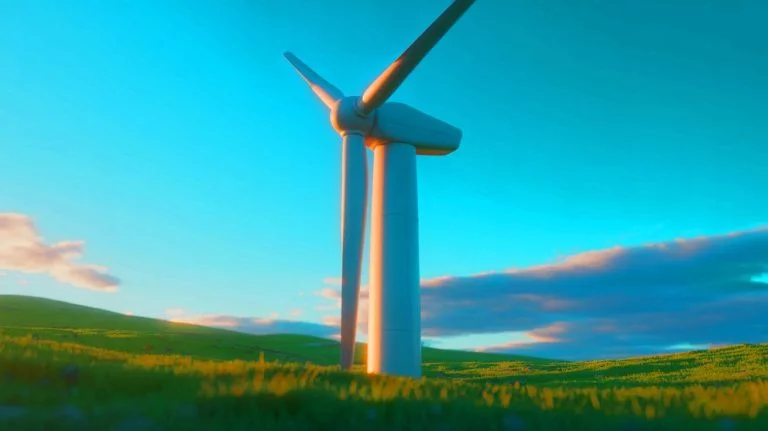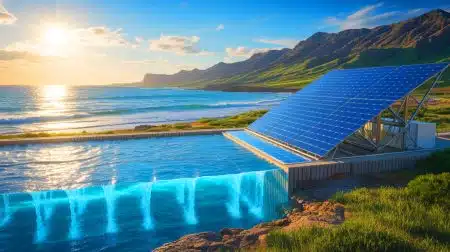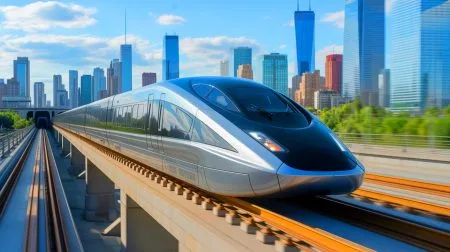| IN A NUTSHELL |
|
In the ever-evolving world of renewable energy, bladeless wind turbines (BWTs) are emerging as a groundbreaking alternative to traditional turbines. These innovative structures, developed through the expertise of researchers at the University of Glasgow, promise to revolutionize the way we harness wind power. By replacing the conventional blade design with a more streamlined and efficient form, BWTs are poised to transform our energy landscape. Through advanced computer simulations, scientists have pinpointed the optimal designs for these turbines, paving the way for their integration into national electricity grids. This article explores the intricacies and potential of this remarkable technology.
Understanding Bladeless Wind Power
Conventional wind turbines have long dominated the landscape of renewable energy, leveraging the rotational motion of blades to convert wind into electricity. However, BWTs operate on a unique principle known as vortex-induced vibration (VIV). Instead of rotating blades, these turbines utilize tall, slender masts that sway in response to wind currents. The oscillation, amplified when it matches the structure’s natural vibration frequency, is directly converted into electricity. This innovative approach not only minimizes noise but also reduces maintenance needs, making it a more efficient solution.
The recent study by University of Glasgow researchers demonstrates that the most efficient BWT designs do not necessarily produce the highest power output. Instead, the research identifies an ideal balance between design variables that maximizes energy extraction while maintaining structural integrity. The findings suggest a mast design measuring 31.4 inches in height and 25.4 inches in diameter, capable of delivering up to 460 watts of power, a significant improvement over current prototypes.
The Advantages of Bladeless Design
One of the most notable benefits of BWTs is their silent operation. Traditional turbines often produce noise pollution, which can be a nuisance to nearby communities. The bladeless design eliminates this issue, providing a quieter alternative that is more compatible with urban environments. Additionally, the absence of rotating blades makes BWTs safer for wildlife, reducing the risk of bird collisions commonly associated with conventional turbines.
BWTs also offer a more compact footprint, occupying less land area than their traditional counterparts. This characteristic makes them ideal for areas where space is limited. Furthermore, the simplified design of BWTs means they require less maintenance, lowering operational costs and increasing their overall appeal as a sustainable energy solution.
Pioneering Research and Future Implications
The groundbreaking research conducted by the University of Glasgow marks a significant step forward in the development of BWTs. By employing computer simulations, researchers have identified the “sweet spot” in design that maximizes power generation without compromising structural strength. This insight is crucial for scaling up BWTs to produce even more significant amounts of energy, potentially reaching outputs of 1 kilowatt or more.
The implications of this research extend beyond academic circles. Companies in the renewable energy sector are beginning to explore the potential of BWTs. The partnership between BMW and Aeromine Technologies to test bladeless wind power at the Oxford MINI Plant is a testament to the technology’s growing appeal. As these prototypes continue to demonstrate their efficacy, we can expect a broader adoption of BWTs in the coming years.
Charting the Path Forward
As the world confronts the challenges of climate change and the need for sustainable energy solutions, BWTs offer a promising path forward. Their unique design and operational advantages position them as a viable alternative to traditional wind turbines. The research findings published in the journal Renewable Energy provide a roadmap for future development, encouraging the industry to innovate and refine these designs further.
The potential for BWTs to contribute significantly to global energy needs is vast. With continued investment and research, these turbines could soon become a staple of our renewable energy infrastructure, offering a cleaner, quieter, and more efficient means of harnessing wind power.
As we look to the future, the question remains: How will the integration of bladeless wind turbines reshape our energy landscape, and what new innovations will they inspire in the quest for sustainable power?
Did you like it? 4.5/5 (28)








Wow, bladeless wind turbines sound like something out of a sci-fi movie! 🌬️ How do they actually work?
Nope, the “research” indicates that they vibrate in synchronization with a particular wind speed, so anything outside the 5 mph band it was designed for, you get nothing.
I’m skeptical about the efficiency claims. Has this been tested in real-world conditions?
What’s the expected lifespan of these BWTs? Do they last as long as traditional turbines?
How does the energy output compare to solar panels?
This sounds amazing! When can we expect to see them widely adopted?
I’m curious about maintenance. How often do BWTs need servicing?
Is the energy conversion process as efficient as they claim? 🤨
Thanks for the info, but I’d love to see some real-world case studies.
Can they be used in conjunction with existing renewable energy systems?
Bladeless technology might be the future! But will it be affordable for everyone? 💸
Are there any environmental downsides to using bladeless wind turbines?
Can these turbines be scaled up for industrial use?
Wow! That image labeled “Illustration of bladeless wind turbines in a modern energy landscape. Image generated by AI.” looks remarkably like a standard wine turbine, but AI generated. That’s some high quality content checking right there. Honestly it makes be didn’t the veracity of the rest of the AI “enhanced” article.
Is the technology cost-effective compared to traditional wind turbines?
It’s incredible that they’re silent. But how durable are they?
Bladelss wind turbines? Sounds like a bladeless razor! 😂
What are the limitations of bladeless wind turbines?
I’d love to see a video of these in action.
Are there any plans to integrate BWTs into smart grids?
Silent operation is great, but how do they fare in terms of energy efficiency?
Why haven’t we heard more about this technology until now?
I’m excited to see how this technology evolves over the next decade.
Will they be able to replace traditional wind turbines entirely?
How do BWTs handle varying wind speeds? 🌪️
Thanks for the article! I’m optimistic about the future of renewable energy. 🌍
I’m concerned about wildlife. Are BWTs truly safer for birds and bats?
Can these be installed in residential areas without causing any disturbance?
How do they perform in high-wind situations? 🤔
Great article! Thanks for shedding light on this innovative technology. 🙌
Silent power? That’s music to my ears! 🎶